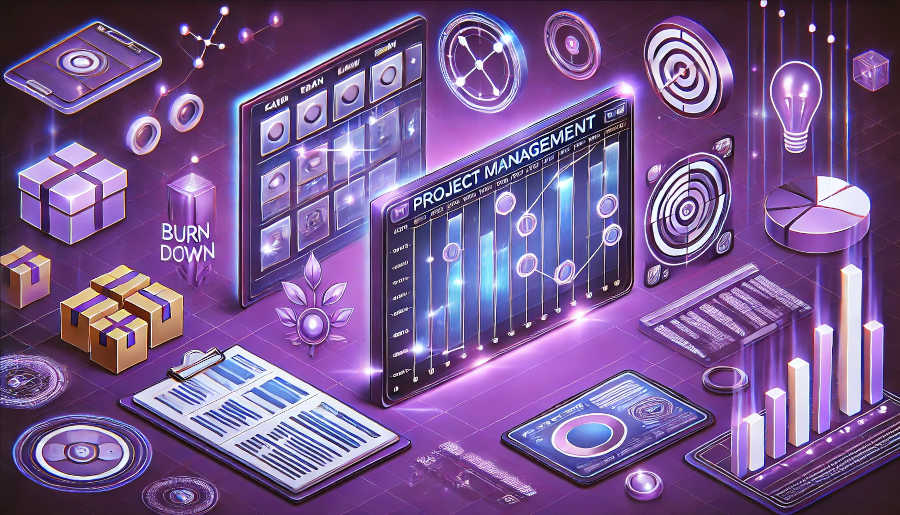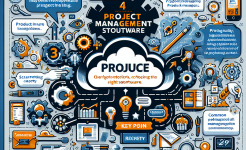The burndown chart is a powerful tool in project management, especially in cross - departmental projects where multiple teams with different functions and goals collaborate. In such complex projects, effective communication, clear progress tracking, and timely issue identification are crucial for success. The burndown chart serves as a visual representation of the project's progress over time, enabling all stakeholders to have a common understanding of where the project stands.
Cross - departmental projects often face challenges such as misaligned priorities, communication gaps, and difficulties in coordinating resources. The burndown chart helps to address these issues by providing a simple and intuitive way to monitor the remaining work against the planned schedule. It allows project managers to quickly identify if the project is on track, ahead of schedule, or falling behind, and take appropriate actions accordingly. This article will explore the various applications of the burndown chart in cross - departmental projects, from planning to execution and control.
By using the burndown chart, teams can enhance transparency, improve communication, and increase the likelihood of delivering projects on time and within budget. It provides a shared language for all departments involved, facilitating better cooperation and synergy. In the following sections, we will delve deeper into how the burndown chart can be effectively utilized at different stages of cross - departmental projects.
Planning Phase
During the planning phase of a cross - departmental project, the burndown chart plays a fundamental role in setting clear expectations. First, it helps in breaking down the project into smaller, manageable tasks. Each department can contribute to defining the tasks relevant to their area of expertise. For example, in a new product development project, the R&D department might identify tasks related to product design and prototyping, while the marketing department focuses on market research and branding tasks. By listing all these tasks on the burndown chart, the project team can get a comprehensive view of the overall workload.
Secondly, the burndown chart is used to estimate the time required for each task. This involves input from subject matter experts within each department. They can draw on their past experience and knowledge to provide realistic time estimates. This collaborative effort in estimating ensures that the project schedule is based on accurate information. For instance, the manufacturing department can estimate the time needed for production based on the complexity of the product design and the available production capacity.
Finally, the burndown chart helps in setting milestones. Milestones are important checkpoints in the project that mark the completion of significant portions of work. By incorporating milestones into the burndown chart, all departments are aware of the key deadlines and can align their efforts accordingly. This not only provides a sense of direction but also helps in coordinating the handover of work between different departments. For example, the milestone of completing the product design can trigger the start of the marketing campaign planning.
Execution Phase
In the execution phase of a cross - departmental project, the burndown chart serves as a real - time progress tracker. It allows each department to update the status of their tasks regularly. This could be done on a daily or weekly basis, depending on the project's pace. For example, the sales department can mark the tasks related to customer acquisition as completed or in progress. This continuous update provides an up - to - date picture of the project's progress, enabling project managers to identify any bottlenecks or delays early.
The burndown chart also promotes communication among departments. When a department encounters issues that may affect the overall project progress, they can highlight it on the chart. This visual cue alerts other departments and the project management team. For instance, if the IT department faces technical difficulties in implementing a new software system, they can indicate it on the burndown chart. This allows the relevant departments, such as the operations department that depends on the new system, to be aware of the situation and plan accordingly.
Moreover, the burndown chart helps in resource allocation. By observing the progress of tasks, project managers can determine if certain departments need additional resources. If a particular department is falling behind on their tasks, the project manager can reallocate resources from other departments with more slack. This dynamic resource allocation ensures that the project stays on track and that resources are utilized efficiently.

Control Phase
In the control phase of a cross - departmental project, the burndown chart is used to measure performance against the plan. By comparing the actual progress of tasks with the planned progress on the burndown chart, project managers can calculate variances. If the actual progress is slower than the planned progress, it indicates a negative variance. This could be due to various factors such as unforeseen technical problems, lack of resources, or communication issues. Project managers can then conduct a root cause analysis to address these issues.
The burndown chart also helps in making data - driven decisions. Instead of relying on gut feelings or anecdotal evidence, project managers can base their decisions on the data presented in the chart. For example, if a particular task has been consistently delayed, the project manager can decide whether to extend the deadline, reassign the task, or provide additional support. This data - driven approach increases the chances of making effective decisions that can keep the project on track.
Finally, the burndown chart can be used to forecast the project's completion date. By analyzing the current progress rate and the remaining work, project managers can predict whether the project will be completed on time. If the forecasted completion date is beyond the original deadline, appropriate actions can be taken, such as accelerating the work, reducing the scope, or renegotiating the deadline with stakeholders.
Challenges and Solutions
Implementing the burndown chart in cross - departmental projects is not without challenges. One common challenge is the resistance to change. Some departments may be accustomed to traditional project management methods and may be reluctant to adopt the burndown chart. To overcome this, project managers should provide training and education to all team members. They should explain the benefits of using the burndown chart, such as improved communication, better progress tracking, and increased transparency. By demonstrating how the tool can make their work easier and more efficient, departments are more likely to embrace it.
Another challenge is inaccurate data entry. If departments do not update the burndown chart accurately or in a timely manner, the information on the chart will be unreliable. To address this, project managers should establish clear guidelines for data entry. They can also set up regular checks to ensure that the data entered is correct. Additionally, using automated tools for data entry can reduce the chances of human error.
Finally, the complexity of cross - departmental projects may make it difficult to create a simple and understandable burndown chart. To simplify the chart, project managers should focus on the key tasks and milestones. They can group related tasks together and use color - coding or other visual cues to make the chart more intuitive. This ensures that all stakeholders, regardless of their department or level of technical expertise, can easily understand the project's progress.
Conclusion
In conclusion, the burndown chart is an invaluable tool in cross - departmental projects. It offers a range of benefits from the planning phase, where it helps in task definition, time estimation, and milestone setting, to the execution phase, where it serves as a progress tracker, communication enabler, and resource allocation guide, and finally to the control phase, where it aids in performance measurement, decision - making, and forecasting.
Despite the challenges associated with its implementation, such as resistance to change, inaccurate data entry, and chart complexity, these can be effectively addressed through proper training, clear guidelines, and simplification techniques. By leveraging the power of the burndown chart, cross - departmental projects can achieve better coordination, enhanced transparency, and ultimately, a higher probability of success.
Project managers and teams involved in cross - departmental projects should recognize the potential of the burndown chart and make it an integral part of their project management toolkit. With its ability to provide a visual and data - driven approach to project management, the burndown chart can help navigate the complexities of cross - departmental collaboration and lead to the successful delivery of projects. As organizations continue to engage in more complex and cross - functional projects, the importance of tools like the burndown chart will only increase.
ARTICLE TITLE :Application of burndown chart in cross-departmental projects ,AUTHOR :ITpmlib

















